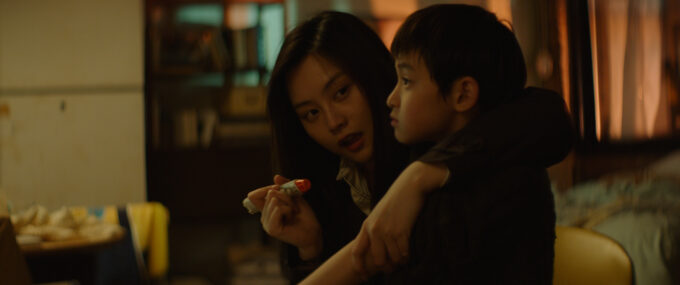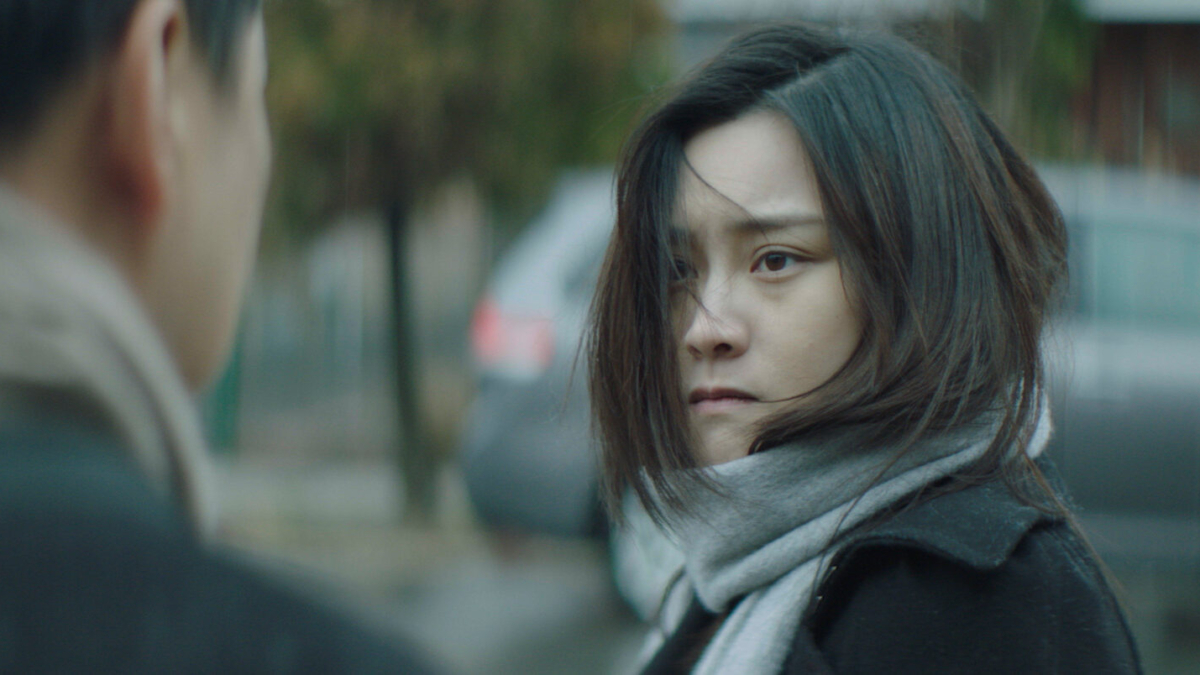Written By: Huizhu Pan
This article contains spoilers.
Blending into the community can be a life-long concern for many migrants in the United States. Their insecurity usually comes from various aspects, including cultural discrepancy and identity crisis. In her debut feature “Model,” writer-director Ran Jing tells the story of Lu Shi, a recently graduated Chinese girl, who takes every effort to get into her dream architecture company while facing an emergent visa issue. Lu’s half-brother, Cody, who is an American citizen, makes an unexpected visit, bringing her one last chance — she can maintain her visa by becoming Cody’s guardian. Yet, it also pushes her into a moral and emotional dilemma.
The film is not only about an ambitious girl’s struggle in a foreign land, but it also touches on the reason behind it. Why does Lu and many in her generation try so hard to gain approval? How does one’s primary family influence their senses of belonging? My conversation with director Jing inspires me to view the film from a cultural perspective and understand Lu’s plight through multiple layers.
Generational difference in seeking belonging
“Model” circles around three characters: Lu in her twenties, her middle-aged father Yi, and her six-year-old half-brother Cody. As a Chinese woman who has studied and worked in the U.S. for nearly ten years, Jing draws herself onto Lu’s character. Talking about her experience of blending into the community since she first came to the U.S., Jing said, “For my and Lu’s generation, cultural difference is more like a fact than trouble. The challenge of blending in is about communication. And different generations approach the issue variously.”
As an ambitious young professional, Lu dreams of joining Greyson Company and settling down in New York. However, the strict entry standards throw her into a plight: She has to get through a three-month trial period before she receives an official offer, which is a prerequisite for visa application. Spending all her time on achieving this goal, Lu seldom communicates with her family and friends, making herself exhausted and lonely.
Lu’s struggle is evocative and it reflects the young generation’s pressure under a fast-paced society. In our conversation, Jing mentioned that “Seeking approval is like a symptom of someone who lacks belonging. Sometimes we are stuck by the idea of holding on to something without knowing why.” Lu’s journey of gaining approval is also a process of knowing herself. Eventually, she realizes that what she needs is family love.
Yi represents an older generation who has difficulty accepting new cultures. “Many people of his generation don’t learn English until [they] arrive in the forign land,” Jing said. “Their way of finding belonging is to keep old habits and stay with familiar people.” Rooted in patriarchal traditions, Yi tends to tackle things in his own way. He seldom considers his daughter in decision making, which leads to their conflicts.
As an experienced Chinese actor as well as a father, Yanhui Wang makes the middle-aged character convincing. His improvisation inspired Jing. “We assume the father would panic when he knows that his son is missing, but Yanhui shapes the character in an opposite way. He shows us a calm and determined father who believes he can handle anything.” The father’s strength stems from his life experience that can be evocative to most people from his generation.
In contrast, Cody is a child born in the Internet age. Watching Marvel films and playing electronic games are parts of his daily life, making him quickly able to connect with children from other countries. As Jing described, “Cody is born a global citizen.” By depicting the three generations’ different states when blending into a new culture, Jing wants to portray a new reality of migration today.

A turning point of self-acceptance
The two storylines, one as to Lu’s career goal and the other one regarding the guardianship of Cody, are well-designed. When Cody is missing due to Lu’s carelessness, Lu also loses her job opportunity, which pushes Lu to her lowest point. Like the enclosed architectural model she makes, Lu blocks herself in her world and seldom accepts others’ kindness. On the one hand, she grieves that she never receives the same love as Cody from their father. But on the other hand, she refuses to admit that she needs the love. Instead, she arms herself with the determinate and independent “model Asian girl’s identity.”
“The scene where Lu collapses in the bathroom is her turning moment. That’s when she realizes that she cannot control everything and that she must accept the imperfect herself,” Jing said in our interview. I agree with Jing’s opinion that belonging starts with self-acceptance. To some extent, “Model” is also a story about growth. The experience of getting along with her brother Cody enables her to understand responsibility. She is no longer the girl who seeks family love, but a real adult who starts to understand her father’s plight.
After learning the meaning of interpersonal communication and love, Lu improves the assigned design for her trial period and eventually gains approval from Greyson Company. The ending of the film is very optimistic and idealistic. In reality, it’s not easy for most migrants to tackle pressure varying from visa issues to financial burdens and the insecurity caused by unstable relationships.
As a new director, Jing also faces the issue of finding belonging in this new field. Before she started shooting “Model,” she was working in animation development in Hollywood. She always wanted a chance to do live-action since “Working with live actors can sometimes bring surprises which may not be achieved by creating animation by myself.” Challenges during production includes working with a child actor who is allowed to stay on set for up to four hours per day. Since Jing has limited experience with children, she cooperated with another screenwriter, Feifei Guo, who has a young child. “Our cooperation went well, and Jingzhe (Cody) is surprisingly talented,” Jing said. “And Guo helped design Cody’s actions so that we could show the character instead of telling.”
All in all, “Model” draws our attention to the modern migration. It’s a story that happens in our times when China’s Two-Child Policy, as well as the migration wave under globalization, have a significant impact on Lu’s generation. When discussing how audiences from different cultural backgrounds would perceive the film, Jing said, “I wanted to make films with no borders. I hope ‘Model’ could make its audiences resonate with its expressions on family love and belonging.”
Model makes its New York premiere at the 43rd Asian American International Film Festival. For ticket and screening information, please go here.

